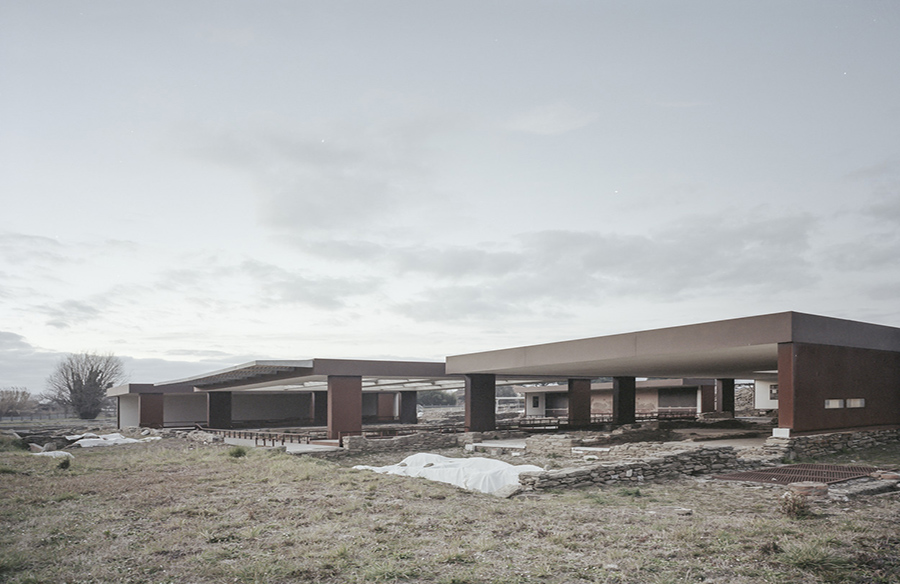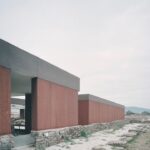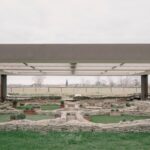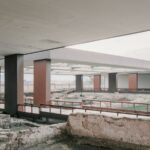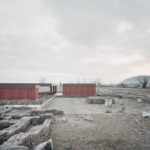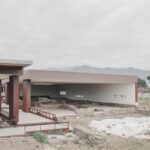The Domus Affreschi, situated within the archaeological site of Luni in Italy, undergoes a transformation with a contemporary approach. The project aims to reinterpret the original volumes of the Domus while safeguarding its historical significance. The focal point is the protection of the recently restored Roman mosaics, achieved through a modern roofing structure.
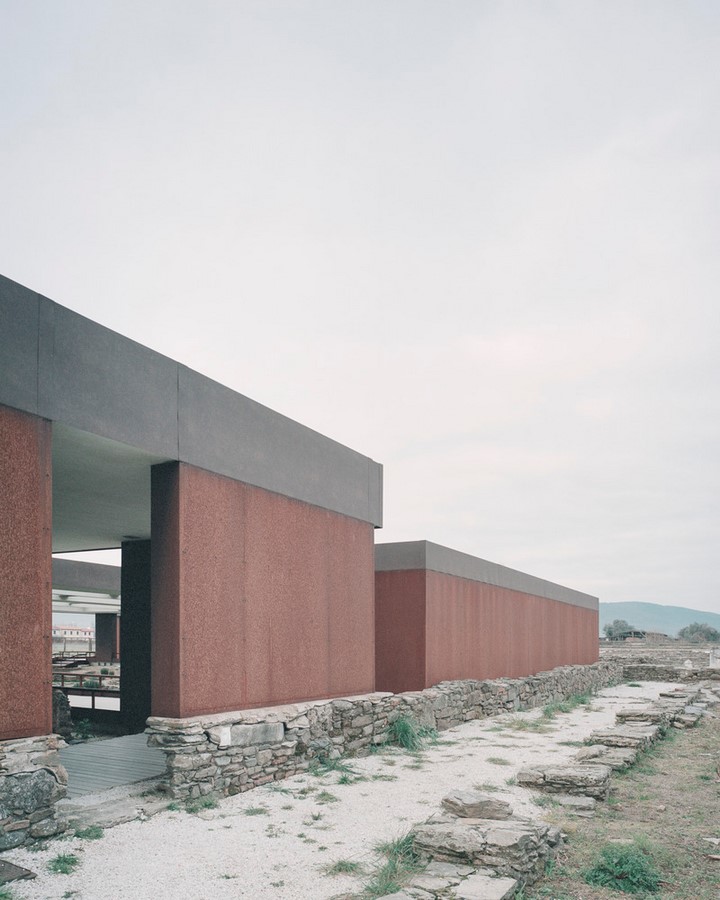
Innovative Design Approach
The design revolves around the creation of new architectural units inspired by the original Domus volumes. The expansive new roof, divided into three sections, channels rainwater into drains along the periphery of the new construction. Emphasizing autonomy and removability, the structure does not require any ground foundation, meeting the client’s objective of shielding the Domus from environmental elements.
Structural Ingenuity
The roofing structure, entirely constructed of steel, consists of three distinct sections supported by the weight of structures along visitor walkways. Rainwater is directed below the walkways, collected by trays, and channeled into the main drainage canal. The design ensures the protection of the restored mosaics while enhancing the visitor experience.
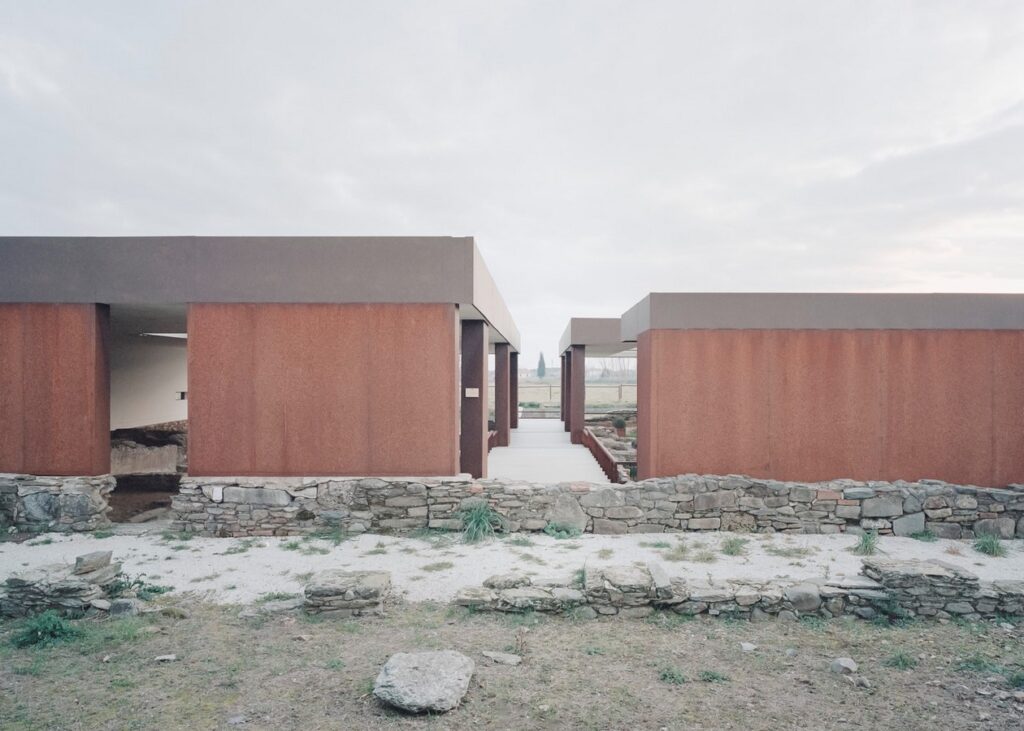
Seamless Integration
All pathways are elevated off the ground, featuring concrete slats laid on a steel substructure. The water collection system integrates discreetly into the structure, preserving the natural ambient light to accentuate the beauty of the mosaics. The project prioritizes the protection of existing heritage, employing a structural model that harmonizes with the surroundings without disturbing the archaeological site.
Enhancing the Archaeological Experience
The transparent roofs over the Domus garden safeguard the historic garden from water and wind damage. Removable elements such as weathering steel panels, plasterboard ceilings, and gravel-filled trays contribute to the structure’s stability and protect it from wind impact. The new roofing structure not only preserves archaeological treasures but also creates an immersive tourist itinerary, enriching the archaeological park experience.


